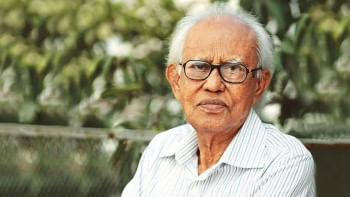More female workers key to higher growth: WB
Increasing female labour force participation will help the country break the decade-long 6 percent growth barrier, the World Bank said yesterday.
“Women make up a little over half the country's population, but their contribution to measured economic activity, growth and wellbeing is far below its potential,” the WB said in its Bangladesh Development Update 2015.
Despite significant progress in recent decades, the labour market remains divided along gender lines and progress toward gender equality seems to have stalled, the WB said.
For women, the labour force participation rate is only 33.7 percent, which is 81.7 percent for men, according to Bangladesh Labour Force Survey 2013.
Women also account for most unpaid work and when women are employed in paid work, they are over-represented in the informal sector and among the poor.
“If Bangladesh wants to grow beyond 6 percent growth, it has to reap the benefits by reinventing demographic dividends with more participation from female workforce,” said Zahid Hussain, lead economist at the WB's Dhaka office.
If female labour participation rates increase (FLPR) by 2.5 million a year to equal with male participation, it will add 1.8 percentage points to potential GDP each year, taking it to 7.5 percent from the present 6 percent, the report said.
Less ambitiously, if female labour participation rises to 48 percent in ten years reaching the level of Japan in 1990, the potential growth rate rises to 6.5 percent, as 0.75 million female labours are added to the workforce each year, Hussain said.
Somewhere between these two, if it rises to 75 percent in 10 years reaching the level of Thailand in 1990, the potential growth rate rises to 7.3 percent, with 2.1 million additional female workers joining the workforce a year, Hussain said quoting the WB report.
The economist said Bangladesh has little scope to increase male participation in the labour force, but there is ample opportunity with the female workforce. Total domestic employment increased from 54.1 million in 2010 to 58.1 million in 2013, according to the Labour Force Survey.
So, the domestic economy added about 1.3 million jobs per year on average. Male workers grew 8.7 percent from 2010 to 41.2 million in 2013, while female worker participation increased only 3.7 percent.
Restrictions on women's rights to inherit properties and social impediments to freely pursue a profession are strongly associated with large gender gaps in labour force participation, said the WB economist. Johannes Zutt, WB's country director for Bangladesh, also spoke.

 For all latest news, follow The Daily Star's Google News channel.
For all latest news, follow The Daily Star's Google News channel. 



Comments